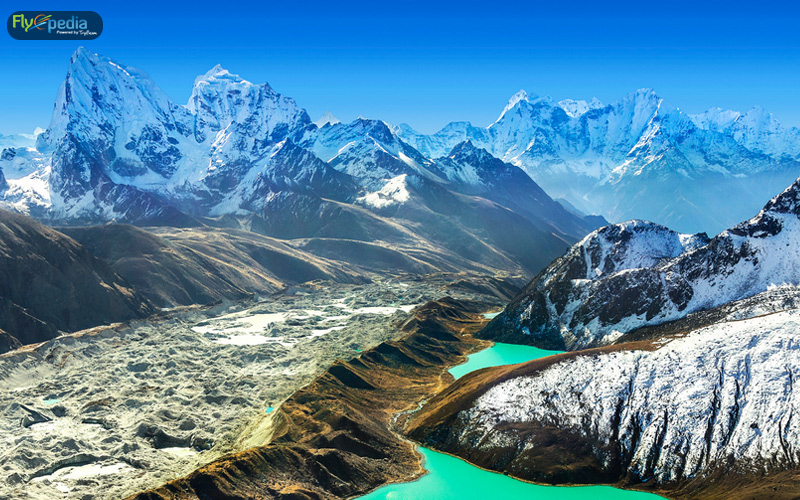Exploring the uniqueness of India is indeed an immersive adventure for visitors, whether it be in terms of culture, ethnicities, food, sceneries, aesthetic tastes, or even biodiversity hotspots of the country. India’s demographics are thriving thanks to an extensive spectrum of biological diversity that purposefully determines the elements of human survival and regional population growth. Numerous endemic species, including 350 mammals, 1224 birds, 197 amphibians, 408 reptiles, 2546 fish, and 15000 flowering plants, can be found in India’s biological hotspots.
Many travelers from over the world, for instance, travelers from Canada book last minute flights to India not only to explore the country’s natural diversity but also to participate in thrilling endeavors. The Western Ghats, the Himalayas, the Andaman and Nicobar Islands (part of the Sundaland), and the Indo-Burma region make up India’s four biodiversity hotspots in total. These hotspots not only include a large variety of endemic species but also provide a wide range of adventure opportunities.
A detailed list of India’s biodiversity hotspots that are well-known for outdoor leisure:
The Himalayas

Mountains are the most famous and preferred site for tourism, which have fascinated numerous hikers, trekkers, and travel enthusiasts for ages. The Himalayan mountain spectrum, one of India’s top biological hotspots, has the biggest mountain pitch in the world, ranging from 60 meters in the Gangetic plains (Terai in south Nepal) to 8000 meters in the Himalayan peaks. Some rare and endangered species, including one-horned rhinoceros and wild Asian water buffalo, call the Himalayan mountain region home. This area has saved 163 endangered species, including 36 plant species, 50 bird species, 12 amphibian species, 3 invertebrate species, and 45 mammals.
The best season to explore the Himalayas is from late October to early May. However, if you wish to include Ladakh in your schedule, the best time to visit the Himalayas is from May to September. The best approach to visit the Himalayas is either by car or, if you have the stamina, by trekking to the most remote areas. To reach the last railhead or airport, you can take a train or an airplane by booking cheap tickets to India.
Activities to do- Trekking is one of the most popular activities for adventure lovers because there are numerous trekking trails designed for different degrees of endurance. For those looking for excitement, river rafting in Zanskar, Rishikesh, Alaknanda, etc. is a thrilling indulgence. Mountain biking expeditions are open to you. Camping is yet another enjoyable activity. Visit the highway Dhabas and sample the local fare. You might think about visiting monasteries in the magnificent Himalayan region that showcase the lovely local culture.
Sundaland

The Nicobar Islands are a region in India that is a part of the Sundaland Center point. It is interesting to note that it includes the tectonic plates beneath the Indian Ocean. Notable species that can only be found in Borneo, such as orangutans, pig-tailed langurs, Javan and Sumatran rhinoceros, and probosci’s monkeys, call this area home. The rafflesia, which measures one meter across, is the largest flower in the world, and they are found only in Sundaland. The best time to visit the Sundaland is from the beginning of November to the end of April. Major cities like Kolkata, Bangalore, and Chennai offer direct last minute flights to Veer Savarkar Airport in Port Blair, where commercial flights land.
Activities to do – Because the area is rich in marine reserves, sea walks, scuba diving, and snorkeling are all highly recommended. Kayaking, glass-bottom boat trips, cruise, fishing, jet-skiing, parasailing, and other water sports will also be wonderful pleasures. Observe the tumultuous history of the independence struggle at the Port Blair cells jail. Another popular activity in Andaman and Nicobar is island hopping because there are so many breathtaking islands to discover.
The Western Ghats

The Western Ghats, extending from north to south just inland from India’s western coast, holds the designation of a World Heritage Site by the International Union for Conservation of Nature. The montane tropical rain forests that blanket these slopes provide protection for numerous creatures, including tigers, black panthers, and leopards. The southern woodlands harbor the arboreal and reserved lion-tailed macaques, but human activity is imperiling them by reducing their habitat. The peculiar pig-nosed purple frog can be observed in these forests during the monsoon. Naturalists are continually discovering frogs, caecilians, and spider species here, but tragically, many species are also going extinct concurrently. The Western Ghats are most enjoyable after October when Winter begins. For an international traveler, for instance, if you are from Canada various flights to India from Canada land at the Cochin International Airport (COK), which is the closest major international airport.
Activities to do- Trekking, climbing, and bicycling are among the most popular pastimes, and you may want to consider visiting the national parks and animal reserves in this area if you want to go on a top-notch jungle safari and observe birds. Along with some of India’s best temples, explore charming waterfalls, coffee farms, and spice gardens.
The Indo-Burma Region

One of the biggest hotspots is the Indo-Burma region, which encompasses sections of the Andaman and Nicobar Islands and Myanmar, Thailand, Cambodia, Lao PDR, Cambodia, and Cambodia. In addition to the Ganga and Brahmaputra, this hotspot includes plains that get rich alluvial soil from other significant Asian rivers. It is one of the biologically diverse regions, but it is also one of the most endangered. The Annamite muntjac and grey-crowned Crocias are only two species that can be found here. Threats like habitat degradation and illegal wildlife trading loom over them like the Sword of Damocles. There is an urgent need for strict legal protection in this area. Winter (November to February) is the perfect time to visit the Indo-Burma Region. Book your cheap tickets to India today to explore the magnificence of this muti-hued country. Flyopedia.com a website for flight deals from USA to India.
Activities to do include hiking via Meghalaya’s live root bridge. Experience a forest safari in Assam’s Kaziranga National Park, home to the endangered one-horned rhinoceros. It is extremely thrilling to hike amid Mizoram’s blue highlands. You can improve your trip experiences by going skiing at Nathula Pass, kayaking across Sela Lake, visiting Mawlynnong, the world’s cleanest hamlet, rock climbing, boating, seeing several monasteries, and going to music festivals in the northeastern region of the nation.
These Indian biodiversity regions are not only abundant in biological diversity, but also the ideal place to travel with loved ones, friends, or a significant other. Here, you can plunge into thrilling experiences while also exploring the natural countryside. This time, add a little flair to your excursion by arranging a trip to one of these hotspots for biodiversity in India. You’ll be able to attest to great experiences for memories that will last a lifetime.


